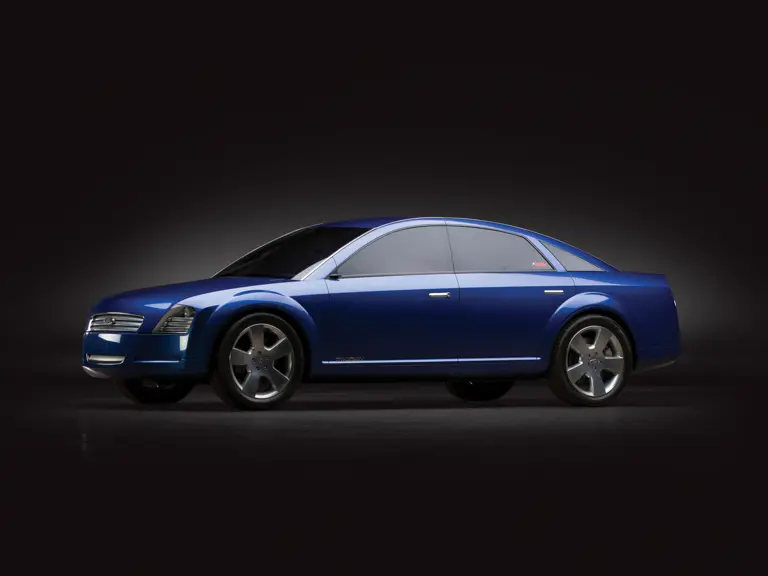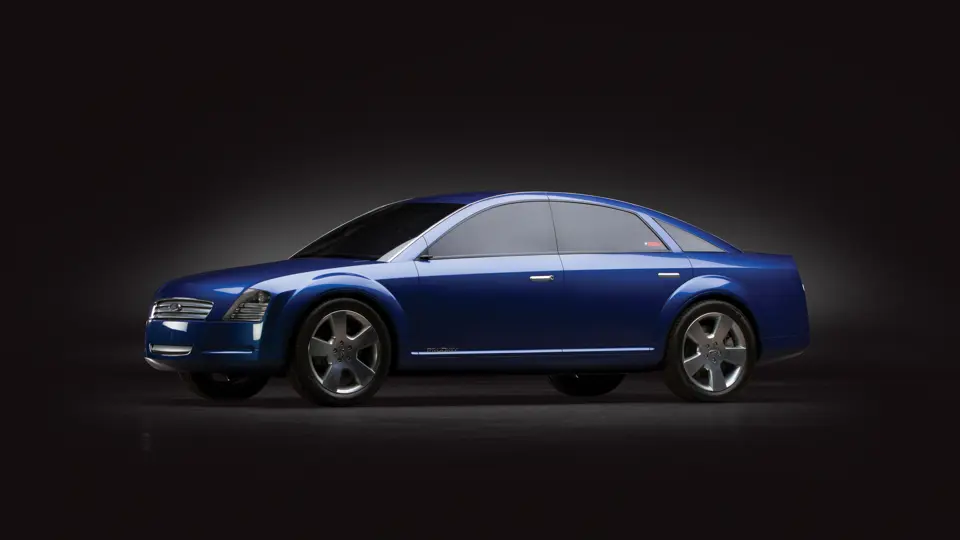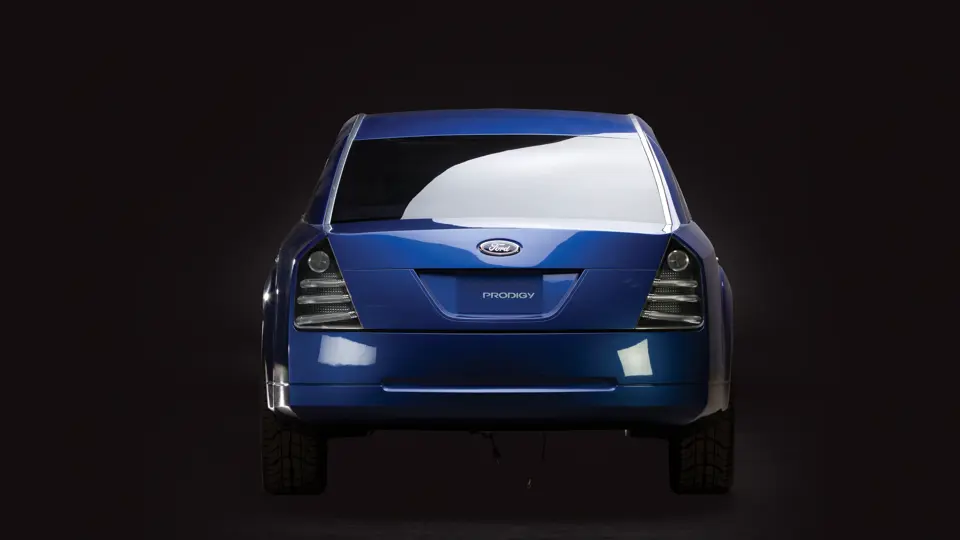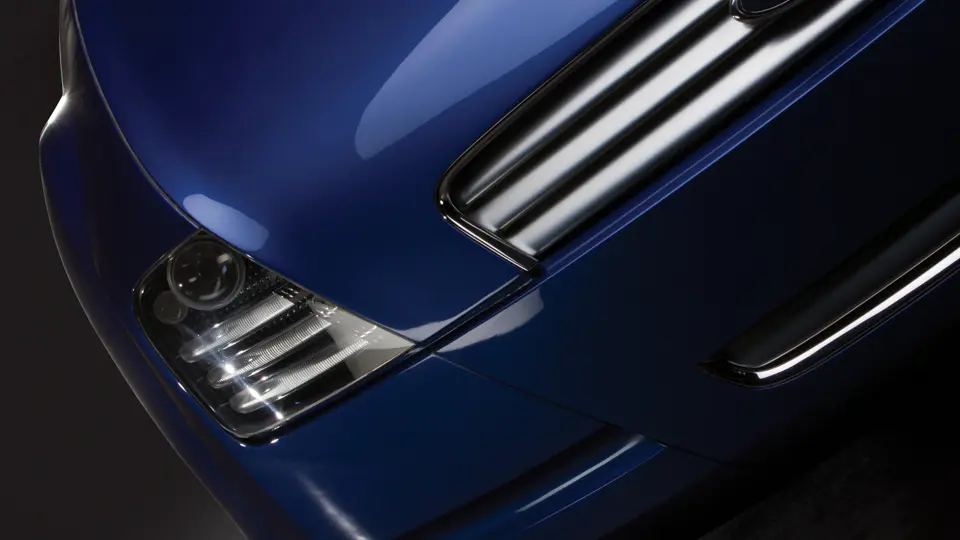Rolling display model with a partial interior and no engine or drivetrain. Wheelbase: 112 in.
The Ford Prodigy concept was unveiled in January 2000 at the North American International Auto Show in Detroit. Its aerodynamic design, which yielded a drag coefficient of just 0.199, combined with its light weight, which was achieved through extensive use of aluminum, rendered it one of the most promising concepts of its era. As a result of the Partnership for a New Generation of Vehicles (PNGV) initiative, Ford developed the Prodigy, with the goal of attaining 80 mpg in a production-feasible family vehicle. The resulting four-cylinder, 1.2-liter engine was about 35 percent more efficient than conventional gasoline engines, as it could travel more than 70 mpg on gasoline and could produce 74 horsepower at 4,100 rpm. Variable ride height, grille shutters, and under-car shields also contributed to its slippery aerodynamics.
Like many modern concept vehicles, non-operational “roller cars” without drivetrains are also constructed as static display models, as seen here. These lighter and more easily transported versions are used to gauge customer appeal of a new exterior design. This concept was shown simultaneously with the functional Prodigy, and it was seen throughout North America and featured on numerous media networks.
Please note this lot is offered on a Bill of Sale.


















 | Farmer's Branch, Texas
| Farmer's Branch, Texas














